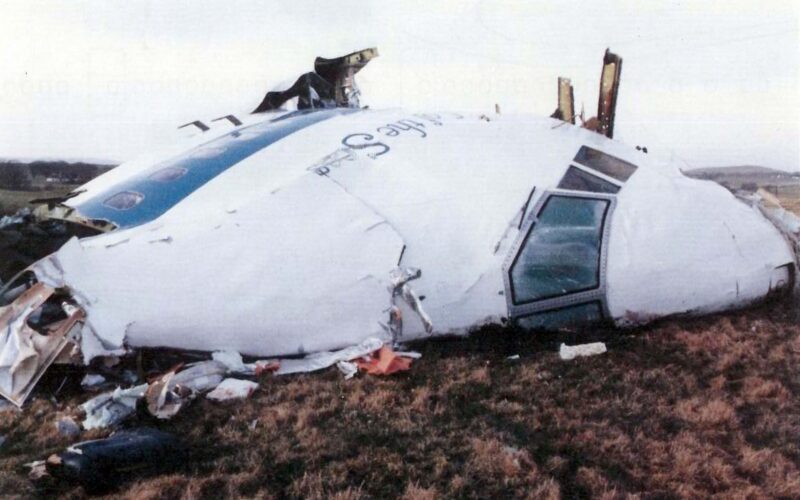On the evening of December 21, 1988, Pan Am Flight 103 was cruising at 31,000 feet over the small Scottish town of Lockerbie.
The aircraft, ‘Clipper Maid of the Seas’, was a Boeing 747-100 en route from London Heathrow to New York carrying 243 passengers along with 16 crew, most of whom were traveling home for the Christmas holiday.
At just after 1900 UTC, a bomb detonated on board, tearing a hole through the fuselage. Within seconds, the Boeing 747 broke apart and debris began raining down on the town of Lockerbie.
The main center fuselage and wing section crashed into a residential area, destroying three houses on impact, and creating a crater over 140 feet in length.
More than 200,000 lbs of jet fuel for the transatlantic journey ignited fires which destroyed several more houses in the town. The impact of Pan Am Flight 103 registered 1.6 on the Richter scale.
Only days before Christmas, the quiet town of Lockerbie, situated in the Scottish Lowlands, was devastated. The world watched as haunting images of the crash site emerged, and the scale of the disaster became clear.
Tragically, all 259 passengers and crew on board perished while a further 11 were killed on the ground in Lockerbie.
The mammoth task that investigators faced became clear with a debris field stretching more than 2,000 square kilometers.
Over 1,000 police and soldiers combed through fields surrounding the site for evidence and debris, and would go on to retrieve more than four million pieces by the end of the investigation.
One week after the crash, British investigators announced they had found traces of explosive residue and the team began assembling the fuselage in Farnborough using the wreckage as giant jigsaw pieces.
The part-reconstructed fuselage showed a hole in the forward cargo hold. Once investigators knew where the explosion had occurred, they turned to identifying debris from the baggage containers and found which container the bomb had been loaded into.
After analyzing the debris, it emerged that the suitcase which housed the bomb was likely a brown, hard-shell Samsonite case, and clothes inside were traced to a small shop in Malta.
The explosive device was disguised inside a Toshiba cassette player with a timer intended to detonate over the sea, destroying the aircraft along with any evidence.
However, following a delay on the ground at Heathrow, the timer stopped over Lockerbie. It is believed the suitcase originated from a connecting flight in Frankfurt. But the passenger who checked in the bag never boarded Flight 103.
Pan Am eventually filed for bankruptcy, in part due to the after-effects of the bombing of Flight 103 during which the company was found guilty for willful misconduct.
The airline had not followed ‘Passenger Baggage Reconciliation’ protocol which is in place to prevent the loading of a bag without an accompanying passenger.
Twelve years after the Pan Am Flight 103 disaster, Abdelbaset al-Megrahi, a Libyan intelligence officer, was convicted of mass murder.
Later, in 2009, he was released by the Scottish Government on compassionate grounds and died at his home in Tripoli in 2012.
In December 2020, the US announced it had filed charges against a Libyan man accused of making the bomb which brought down Flight 103.
Earlier this month, on December 11, 2022, just short of the 34th anniversary of the deadliest terror attack on British soil, it was announced that the suspect, named as Abu Mohammad Masud, was now in United States custody. It was reported in November 2022 that Masud had been kidnapped by a militia group in Libya, prompting speculation that he would be handed to the US authorities.

